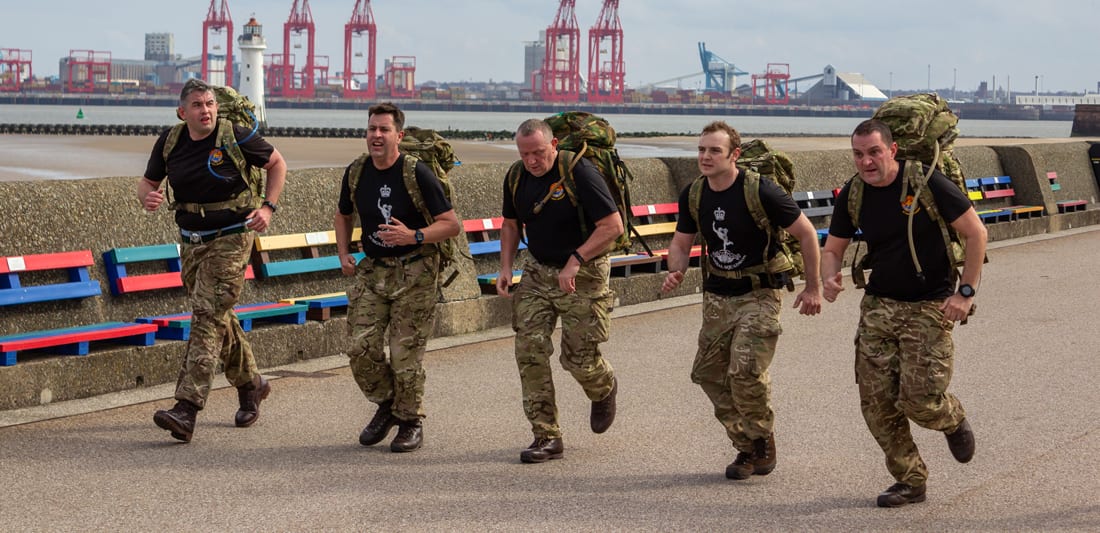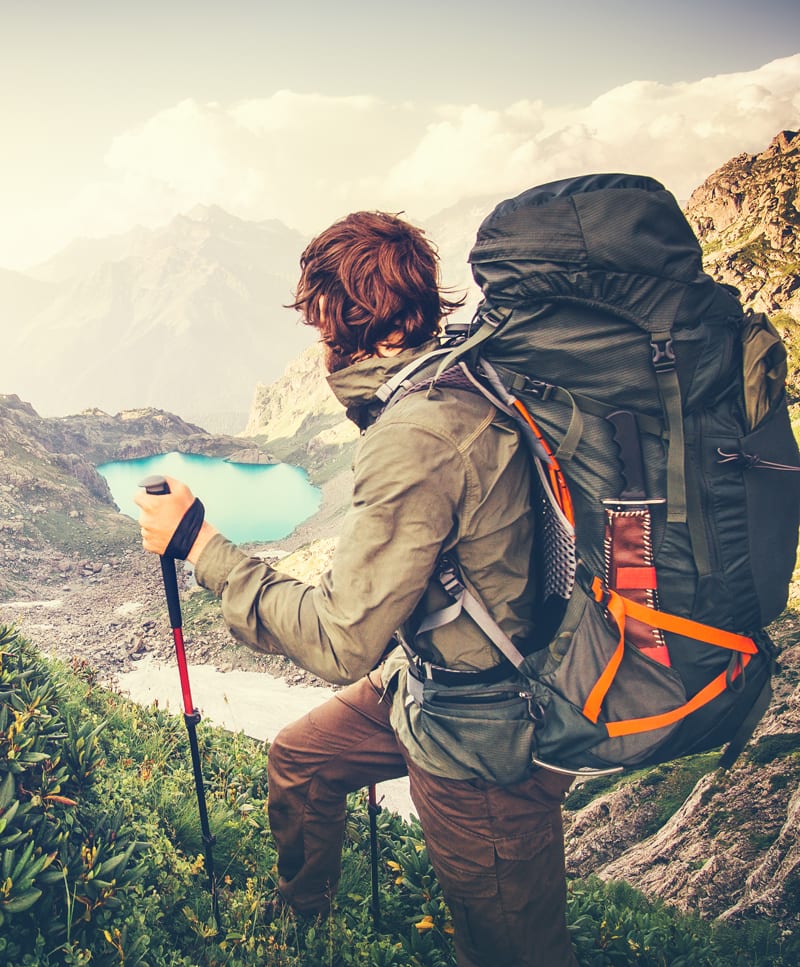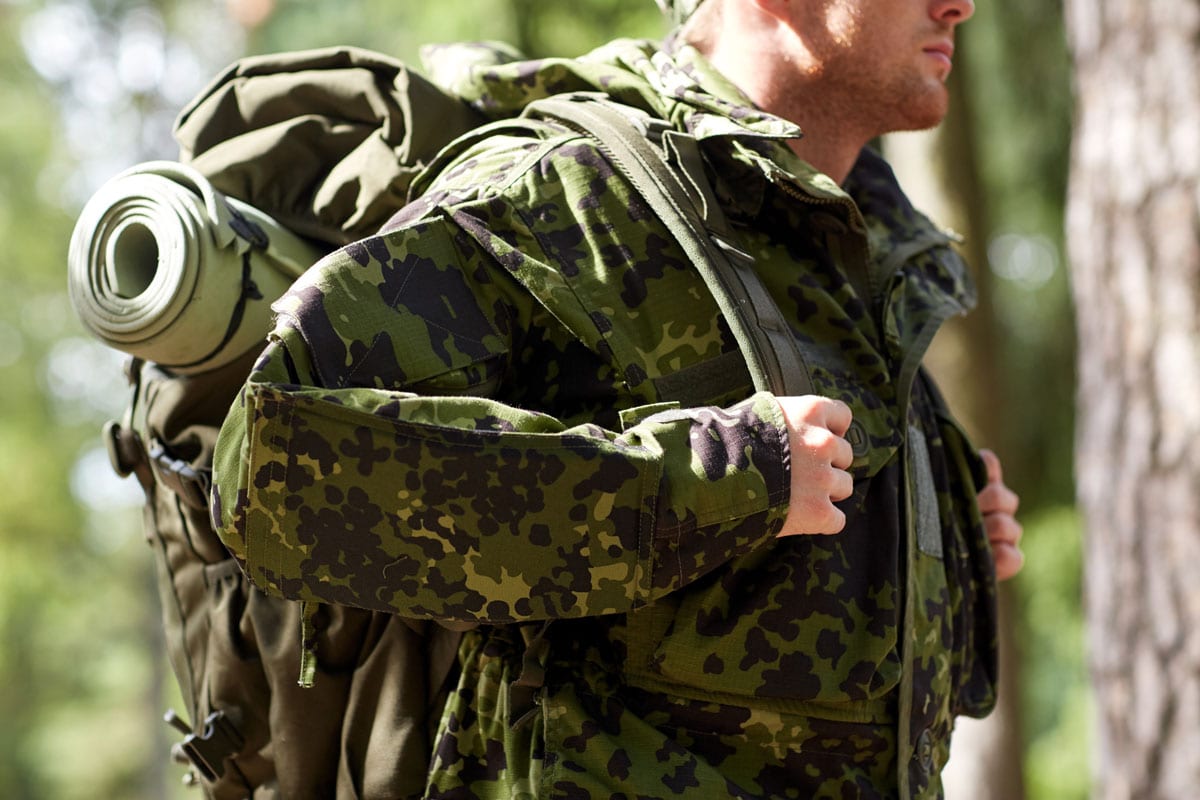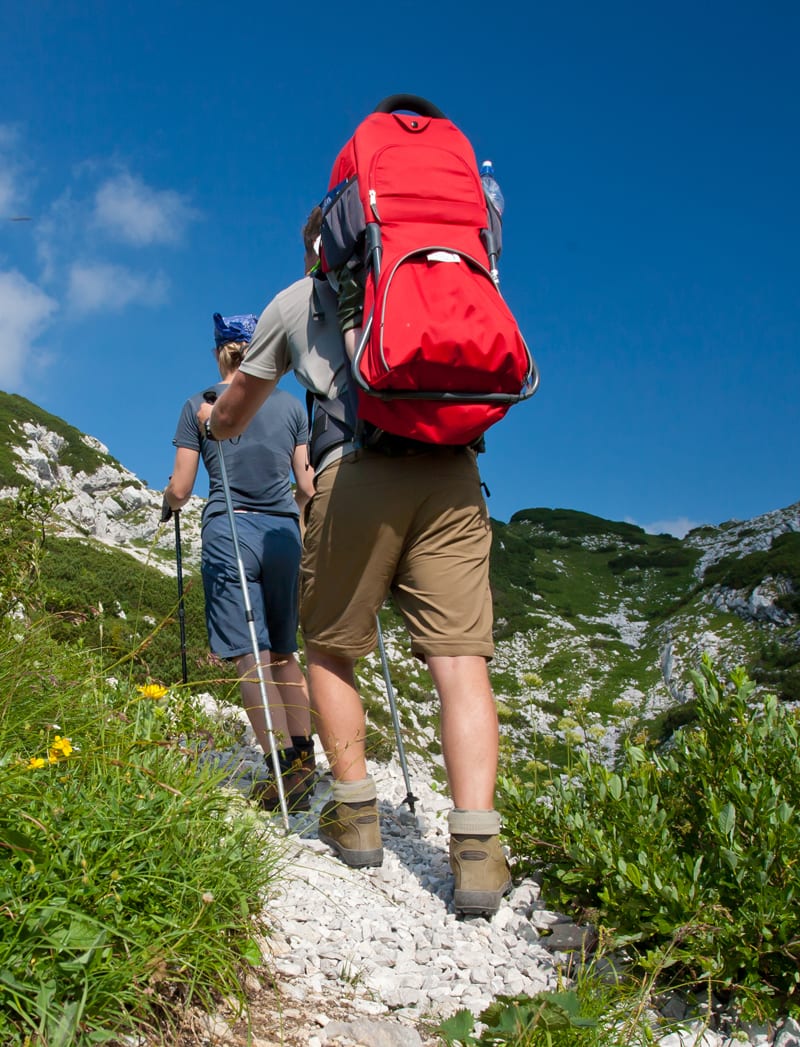Physical Vs Mental Fitness
There is but one way to live life to its fullest- being fit. Understanding the benefits of all-round fitness and knowing how active you should make it easier to improve the overall quality of your life. To help you live better, here’s how you can benefit from mental and physical exercise regardless of your age, sex or physical ability.
When talking about fitness, both mental and physical fitness come into play. More often than not, physical fitness gets plenty of attention, and for a good reason. A healthy body can counter conditions such as heart disease and diabetes, and help you maintain confidence as you age.
However, mental fitness is just as important as physical fitness, and should not be neglected in your self-betterment plans.
Mental fitness means having a brain and emotional health in tip-top shape. It may not necessarily mean training to ace an IQ test, but a series of exercise that helps slow down, decompress and boost a flagging memory.


Aerobics (cardio)
Aerobics involves maintaining an increased heart rate for an extended period of time. Types of cardio exercises include running, swimming, biking, rowing, dancing, and jumping rope.

Strength
Also called Resistance Training. It’s a physical activity with the purpose of increasing muscle strength and mass. Examples include weightlifting, dumbbell and bodyweight exercises.

Balance
This is where you activate your abdominal muscles for stability and control of your body. Balance exercises can include yoga, tai chi and stability ball exercises.

Flexibility
Bragging about how much you can bench is no fun if you have trouble tying your shoes. Flexibility saves you from tight hips, hamstrings, hip flexors and makes you as strong as you can be.

Why you need to be fit and importance of physical fitness
Weight control leads you towards fitness
Along with diet, exercise plays an essential role in managing your weight and preventing obesity. To maintain your weight, the calories you are taking must equal the energy you burn. To lose weight, you must utilize more calories than you eat and drink.
Manage your sugar and insulin levels
Exercise can reduce your blood sugar level and help your insulin work effectively. This can lower your risk for metabolic syndrome and type 2 diabetes. And if you already have one of those diseases, exercise can help you to maintain it.
Feel Happier through fitness
Exercise has been shown to improve your mood and reduce feelings of depression, anxiety, and stress. It produces variations in the parts of the brain that control stress and anxiety. It can also boost brain sensitivity for the hormones serotonin and norepinephrine, which relieve feelings of depression.
Better Mental Health and fitness
Regular exercise can have an extremely positive influence on depression, anxiety, ADHD, and more. It also relieves stress, increases memory, helps you sleep better, and boosts your overall mood. You don’t have to be a fitness fanatic to reap the benefits – browse through our site and discover how to reap these benefits.
How to Achieve Mental Fitness
Be positive with yourself and improve your fitness
Affirmation, or positively talking to yourself, involves strengthening neural pathways to bring your self-confidence, well-being, and satisfaction to a higher level. To start, make a list of your good qualities. Remind yourself that you don’t have to be perfect. Set goals for what you want to make better and start small to avoid becoming confused.
Stop Multitasking
Many think that multitasking enables you to get more things done at once, but it creates more problems than it solves. Focusing on one task at a time will improve your concentration and help you to be more productive.
Try Something Different
New practices can also set you on the way to mental fitness. You can fit new approaches into your daily life by trying new foods, new ways to accomplish routine tasks, traveling to new places or trying a new route to the grocery store.
Read More
Reading is great for your brain. Your brain processes every word you read, including this one. Beyond the mechanics, reading helps you visualize the subject matter on the pages before you, and imagine what voices sound like in the written dialogue.
This can also be a great relaxation technique
Top Fitness Tips for Mental and Physical Exercise.
General physical fitness and targeted exercises to improve stability can prevent falls. But so can staying mentally ready to maintain brain health. A sharp mind helps you to think — and stay — on your feet. Join us and learn to strike a balance.
No Results Found
The page you requested could not be found. Try refining your search, or use the navigation above to locate the post.
150 Exercises You Can Do
As a bonus, we are giving a free fitness exercise ebook to start your healthy lifestyle
“Rucking” vs Aerobic Workout

Enjoy reading!
What is the rucking exercise?
Generally, rucking simply means walking while carrying a loaded backpack. It is also referred to as foot-marching or ruck-marching. The word “Ruck” is a short term for a rucksack, which is commonly used by the military to replace the backpack. Currently, rucking has developed into a form of practical exercise that can help burn calories and improve aerobic endurance. Some call it rucking for fitness. Also, the weighted backpack makes it a great workout to develop solid strength.

Although the exercise may appear simple, don’t be deceived; it can burn close to two times the number of calories that you would lose when you walk without any weight. With the weighted packs, you can develop muscles, improve your endurance, and develop a great shape in less time compared to what you would spend in the gym.
Besides, it is a recommendable exercise for posture improvement and back strength. So, you should consider replacing your current aerobic workout for rucking to improve your aerobic endurance and develop your muscles faster.
What is the required equipment for Rucking?
Although some specially designed plates are available for rucking, you do not have to break the bank before you can engage the workout.
To begin with, an essential item for the routine is footwear. Whether you should use running shoes or boots will depend on the kind of terrain that you are covering. Nevertheless, if you don’t have a specific need to train in boots, you can wear shoes that make you feel comfortable and appears appropriate for the ruck-marching. More so, running shoes are more popular except for those who are required to put boots on. If you are rucking on a long-distance, ensure that you take care of your feet and beware of blisters. Put on proper footwear, anti-chafing creams, and toe-socks to reduce the impact of wear and tear of rucking.
Aside from your footwear, gear is also vital for when you are rucking for fitness. You can consider weights such as weight plates, sand, ruck plates, or bricks, as loads for your rucksack. Also, it is worth noting that rucking has led to the development of special rucking weight plates from different brands. Most of these premium equipment vendors have developed specialized rucks having extra features, as well as hydration bladder packs. Understandably, most of the special rucks are quite expensive. If you are on a budget and you don’t have the funds to get special weight ideas, there are other cheaper and easy-to-find options. You can consider the following gear ideas:
- Full water bottles
- Sandbags
- Bricks (3) – ensure that the edges are taped.
- Rocks – well-shaped rocks that are convenient.
- Ballistic plate carrier
Irrespective of your choice, it is essential not to choose an oddly shaped object. Otherwise, rucking exercise can be painful, and you can eventually become uncomfortable.
Since we don’t expect you to carry weight in your hands, then you have to get your rucksack (i.e., backpack) to load your weights. Otherwise, it won’t be long before you lose your strength from fatigue – and people asking why you are carrying heavyweights.
Don’t forget to get bottled water before the workout. As long as you are rucking for any considerable distance, you shouldn’t joke with hydration. If you are rucking for a short-range, you can go with bottled waters. But if you plan to go for longer rucks, you will get tired of removing the bottled water from the pack, drink, then have to put on your backpack again. Therefore, you are best advised to use a hydration bladder, which allows you to drink on the move.
Why does Rucking work?
Rucking is a reliable method for developing aerobic endurance. The extra weight in the rucksack will keep challenging your endurance level as you move while the most massive muscles in your body (most especially legs and back) work harder. Also, your heart will beat faster, and more calories will be lost. The more weight or speed applied, the more calories that you will burn. However, even if you stroll with a loaded rucksack, it’s still an effective workout.
Is Rucking Good for You?
Rucking is an effective anaerobic workout that improves human fitness and overall health. By performing rucking, you can transform your body in different ways. First off, rucking helps develop muscles, most notably around the shoulders, core, and back. By performing rucking, you can shed off three times as many calories as you would while walking without a rucksack. More so, you get to experience the same benefits as you would gain from running and jogging.
Rucking is an effective routine for improving posture and strengthening of back muscles. If you would like to strengthen your hip and enhance your posture stability, then consider performing rucking. With rucking, you get to combine strength training and aerobic training at a go easily.
Consequently, you will be spending less amount of time for your routine. However, bear in mind that the more rucking you do, the more impact it will have on your health. Also, this routine helps improve your sitting posture at the office desk and enhance your stamina. Hence, it’s an excellent way to reduce pesky back pains.
Aside from fitness benefits, this workout doesn’t need expensive equipment before you can perform strength training workout. Also, rucking can be done at any location. You can even walk around the neighbourhood with your dog as you ruck.
How to Pack Your Rucksack

If you have the fund and plans to ruck consistently with weight plates, you can purchase specially designed rucksacks from the online store. If not, you should simply use your regular backpack as your rucksack.
While loading the weight into the backpack, you should start with about 10% of your bodyweight. Most underused muscle groups are usually engaged with rucking. Therefore, you should go slowly and use a lesser amount of weight for a start. Over time, you can gradually increase the weight as you develop more muscles. Be cautious about going beyond 35 pounds after becoming a rucking regular. Carrying excessive weight can hamper your muscles and injuries.
Consider some of the materials discussed above as your rucksack weight. Also, you can use a dumbbell. However, ensure that you wrap them in towels to stabilize them and reduce motion during the routine. You should keep the weight as high as possible when you place them in your backpack. In this way, the weight will be able to engage your shoulders and upper back. Additionally, you can use yoga blocks at the base of the rucksack to keep the weight high.
Also, you should go rucking with enough water as you would for any other workout. Sunscreen is recommendable during the hot summer or mosquito repellent if you are walking through the woods. Essentially, you should go with any useful material that can aid your cause.
How to Properly Go Rucking
Only a few other routines can beat the simplicity of rucking. Once your rucksack is well-packed, you only need to start walking. To keep the weight high up, adjust the straps of your backpack. Also, during the walk, endeavour to keep the back and core engaged while your posture and movement remains proper.
To get in shape quickly, consider rucking on steep hiking trails and hilly regions. While rucking, refrain from running; otherwise, your joints will become strained earlier than planned. You can brisk walk – and that should be the fastest.

Once you are tried, do not lean forward while walking as it places excessive stress on your knees. Eventually, it can result in more blisters on your feet. To make the workout effective, you have to maintain a good posture – it is also necessary for safety measures.
You might want to walk too fast at the beginning since the rucksack won’t feel heavy at first. Ensure that you refrain from doing so because you will be stressing muscle groups that you hardly use. For your first few trips, you are best advised to use short distances, such as two to four miles. A well-built soldier can go 25 miles with a backpack weighing 200 pounds. But as an average civilian, you will need a long time before you can reach anything close. So, take your time and enjoy your rucking.
Final Say
By now, if anyone asks you what is rucking exercise?
Hopefully, you can give a well-detailed answer. Rucking offers several benefits of a conventional aerobic routine. Also, it is useful for strength training.
So, you should consider replacing your aerobic workout for rucking. Before long, you will be surprised at how strong and well-shaped your body has become.
Other Articles you may like.
Register Now
Sign up today and Get Expert Fitness Advice Right delivered right in your mail



